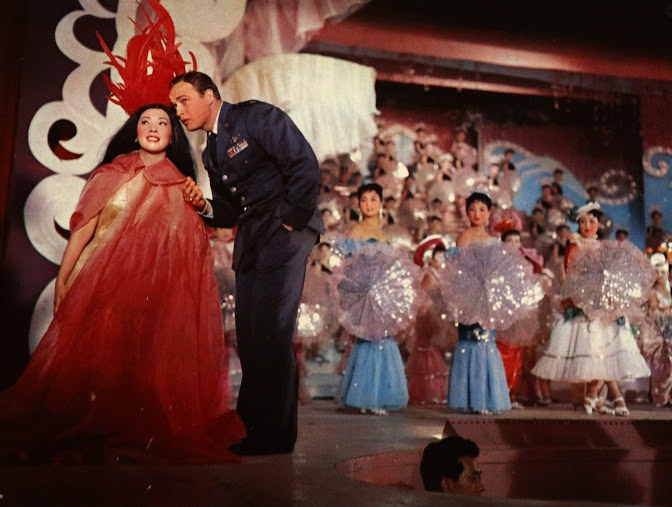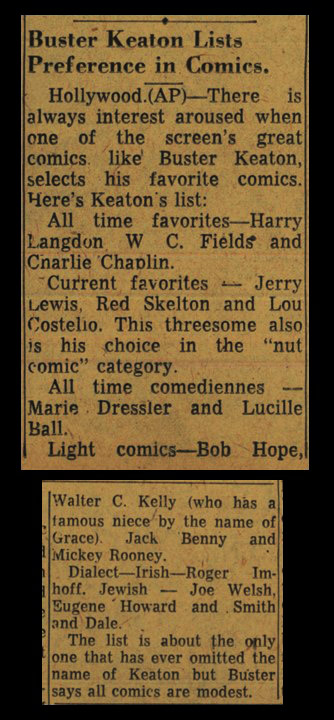Film Noir #24
Noir: The Big Caper, A Bullet for Joey, and The Chase (1946)
THE BIG CAPER (1957) --- Momentarily back to B’s for pearl found in oyster that is crime output of the fifties, prolific a word to but barely describe ocean of output from when drive-ins dominated party that was filmgoing still a habit among those not passively sat hearth-side. The Big Caper was independently produced by Pine-Thomas, as in not William Pine, who had passed in 1955, but his son Howard Pine, who joined with dad’s old partner Bill Thomas to continue in company tradition of cheapies done always for half or less than what they'd expect from wickets, source being pedigree that was crime specialist Lionel White, who also wrote The Killing and The Money Trap before/after, plus tough paperbacks to propel drug store spinner racks. White's name in Big Caper credits assured I would stay for whole of 84 minutes. Did it matter who directed?, and yet Robert Stevens did, him otherwise TV focused. Knowing more of the medium would enable greater praise, so I'd cede to those conversant on Alfred Hitchcock Presents which Stevens directed lots of. I applaud conviction Rory Calhoun brings to robber/badman here, Rory having served serious time in youth for car-stealing, knocking over at least one jewelry store, etc. He was real stuff of darkest noir, Calhoun’s past part of trade made with Confidential magazine (George Nader too) to let Rock Hudson alone. No harm however, as Rory like Errol Flynn earlier on got enhance for “scandal” attached now to his name. Fun fact: Fed-up wife and mother of three of his daughters Lita Baron finally sued Rory for divorce, listing seventy-nine women he had done adultery with. “Heck, she didn’t even include half of them,” responded Rory. The Big Caper kept me hot-wired throughout, twisty and not a little twisted all the way. James Gregory, Robert H. Harris, Paul Picerni, and seriously creepy Corey Allen are along for the crime. I fairly tripped over The Big Caper at Amazon Prime … for which much glad, as I can't recommend it enough. Viewing tip: Blow up the full-frame image and settle in for nice and intended 1.85.
A BULLET FOR JOEY (1955) --- The trailer spoke it all. Scarface and Little Caesar were back, rest of us to back off in face of their fury. Near-twenty-five years previous these credits were, yet Little Caesar was in theatres just a year before as partner to Public Enemy, as was Scarface, which played near continuous via state’s rights distributors from whom the 1932 gangbanger was always in demand. Raft flipped his coin as in old for footage specially shot for Joey’s trailer, and violent quotient was up, or seemed so, happy mayhem back as when Robinson/Raft ruled a thirties roost. Up-to-dating makes Red spies source for villainy, and as before with badmen put to choice between crime and country, it’s either fight for good of himself or safety of us all. Easy choice as formula dictates, Raft and Robinson in third-act debate over mankind at mercy of foreign plotters. Latter are worse than either of us ever were, argues Eddie, but wasn’t this reprise of stand taken ten years before in face of Axis threat? Raft is a mobster deported to Lisbon, snuck back to Canada, arranging now to re-enter the US in exchange for kidnapping an atomic expert. Otherwise, he is our George of past pleasures, as is Eddie dynamic as before on side with the law (see Vice Squad). Circumstance of both actors made modesty of the vehicle an expected if not OK thing, Raft at setting sun of stardom, Robinson sustaining in self-described “B’s” amidst fellow traveling he was assumed guilty of. I frankly enjoy the pair more in A Bullet for Joey than in fancy work for bloated studios (like GR lost in crowd that was Fox’s Black Widow), or even E.G. jammed into The Ten Commandments. Funny that this one came but a season before Robinson/Raft backlog dropped as large lot onto televisions, otherwise I’d say A Bullet for Joey was chance for us all to capture fun of late shows again on paying basis, like with Some Like It Hot (Raft again) or any number of past stars “themselves” again for sake of nostalgia. Remember Eddie being Eddie even unto late sixties, and for Disney yet? Or George doing commercials where in prison garb he protests for Alka-Seltzer? Great personas never died.
THE CHASE (1946) --- A Cornell Woolrich pretzel and rare occasion for having no idea how it'll unravel. When Robert Cummings wakes up from his crazy dream, I thought we both were cracked, but I'll say no more so as not to spoil fun if you've not seen this wonky independent released in a year noir took off in sometimes bizarre direction. Woolrich may have been a (the?) richest source for screen stories. His name stands always for something singular. To think he made magic in shared hotel digs with elderly mum, drink and torment largely to propel him. Brilliance has its price they say, Woolrich paying his thrice-size. The Chase was for years down sinkhole of hard access. I barely heard of it, let alone saw a frame till the restoration Kino got out on Blu-Ray. Producing was Seymour Nebenzal, his own shingle which was usual case. He got stars via free-lance or borrowing, none top-of-marquee but reliable. Spending looks lush but probably wasn’t, Nebenzal like independent kin knowing how to make a little go long ways. Novelty and maybe word-of-mouth was enough to garner $958K in domestic rentals and $403K foreign, so something like profit seems likely. “You’ll Be Gasping for Air at the End of The Chase,” cried Chicago’s first-run ad at the Oriental, their “Big Gay Musical Revue” to restore breathing perhaps. Robert Cummings as compromised hero (psychic war wounds) reduce certainty things will turn out well, tandem villainy of Steve Cochran and Peter Lorre eroding prospect for an upbeat finish. Cochran as cruel was how audiences initially liked him, but how to graduate from meanness to leads? Cummings had too to deal with expectation he’d be funny or at least light stepping, The Chase nice departure and not a little like Saboteur for him. Arthur Ripley as director lends visual flair, him in midst of journey from editing Foolish Wives to right-hand for Harry Langdon, later to helm Thunder Road, finally to teaching at USC. Wish I could have been one of his pupils.




































